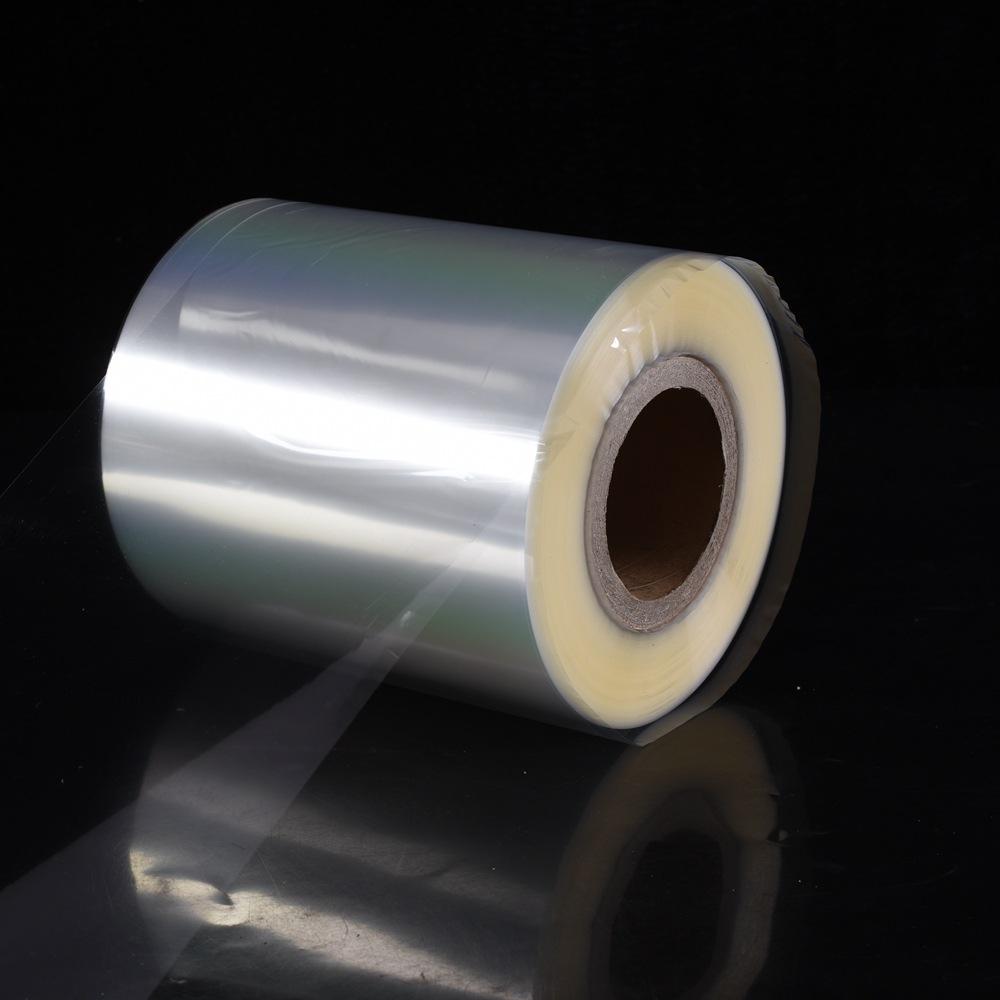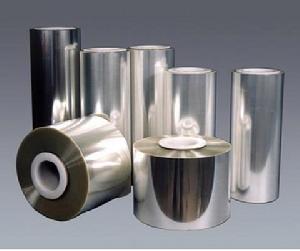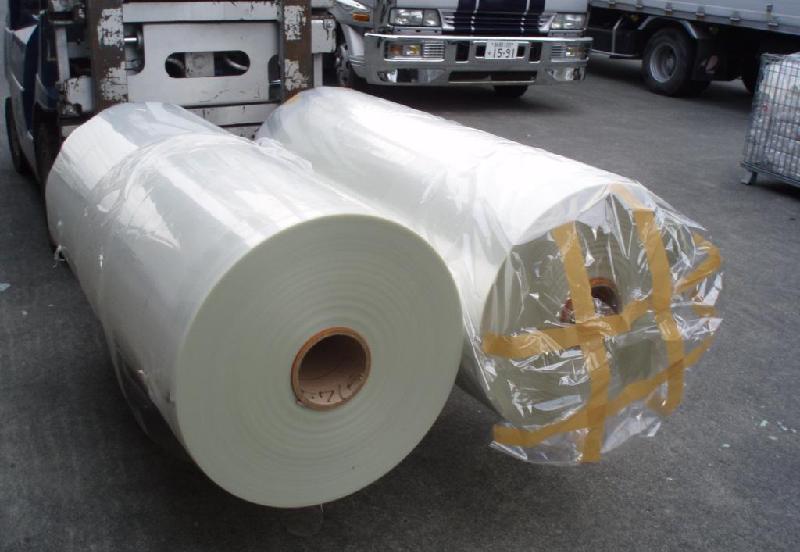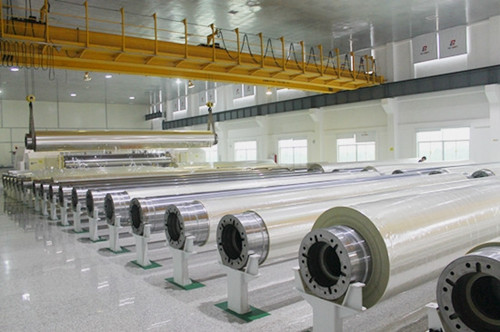| Nanjing Sumino Precision Machinery Co.,Ltd | WhatsApp 086 13390780291 Inquire Product information |
1. Bowing phenomenon
At the entrance of the tenter, the transverse traction film is straight, and at the exit of the cap puller, the film star has the same curved shape. The bowing phenomenon causes the difference in lateral performance. The expansion of the center and the two sides of the PE film is different. In the middle, the amine expansion of the film in any measurement direction is the same in the north, while on both sides, the expansion ratio varies with the measurement direction. The middle part is "isotropic", and the two sides are "anisotropy". The anisotropy on both sides of the film is caused by the signal curve. In severe cases, the anisotropy will cause major problems.
2. The mechanism of bowing
A film with a linear mark is set in the heating furnace of the tenter, and then pre-heated, stretched, thermally cured, and cooled, and the processing stops at this time. The stretched film with marking lines spreads from the entrance to the exit in the heating furnace of the tenter. The experimental results are shown in Figure 6.68 [23], which shows bow deformation along the length of the tenter heating furnace. The straight line at the entrance of the tenter (the bow becomes 0%) is first bent into an "outlet side bow curve" (the bow is negative) at the beginning of stretching, and then becomes a straight line at the end of stretching, and finally, After heat curing, it becomes "entrance side bow" (the bow becomes positive). There is no change in the arc curve zone of the heat curing zone or the exit of the tenter heating furnace.
The distribution of bow phenomenon in the heating furnace of the tenter is estimated to be due to the shrinkage stress in the stretching zone that causes the film to heat solidify. At this time, the high temperature makes the film hardness quite low. The refraction ellipsoid of the cast film is a "sphere" shape, which becomes an "olive sphere" shape in the longitudinal stretch area. Later in the transverse stretching zone, the direction of the main orientation axis gradually becomes transverse due to the influence of the transverse stretching virtual force. The direction of the ellipsoid and the major axis changes laterally. In the thermal curing zone, the shape of the ellipsoid changes at every point in the transverse direction. This is because the front shear stress in the middle of the tenter is 0. As the width increases, the shear stress increases. In general, isotropic films cannot be manufactured by the usual stenter process.

3. Reduce bowing
(1) Prevent the spread of stress
Assuming that the necking stress in the transverse stretching zone is the main cause of bowing, it is proposed that the bowing phenomenon can be reduced by reducing the stress spread between the stretching and thermal curing zones. One idea is to cool the stretched film before it enters the heat curing zone. A decrease in film temperature leads to an increase in hardness, which to some extent prevents stress propagation. Another idea is to loosen the clamp right after the transverse stretch is finished, and then clamp it again when the film enters the heat curing zone. There is another suggestion that a nip roller is provided in the stretching and heat curing zone. The function of the nip roller is to prevent stress from spreading.
(2) Multi-step thermal curing
¡¤The transversely stretched film is cooled to below the glass transition temperature;
¡¤Heat curing at T1 temperature of 200~240¡æ;
¡¤Heat curing again at T2 temperature (T2 temperature is between T1 and T3),
When changing, the transverse stretch ratio of the film is 1%~20%;
¡¤The film is heat cured again at T3 temperature 100~200¡æ.
(3) Changes in lateral temperature
One method is to relax the biaxially stretched film slightly, the longitudinal tension is below 10kg/m, the center of the film is heated to above 150¡ãC, and the two sides are heated to 10¡ãC or higher than the center temperature. It is heated by infrared radiation heater. Another method is to heat the temperature on both sides of the intermediate zone between the stretching and thermal curing zone to a temperature between the glass transition temperature and the thermal curing temperature. Another method is to create a temperature gradient from the high temperature on both sides to the low temperature in the middle.
(4) Others.
For example, put the curled film into the heating furnace of the thermal curing tenter, and correct the bowing phenomenon by conveying the film in the reverse direction. However, this method reduces the production efficiency.
As mentioned above, many techniques have been proposed to improve bowing. However, there is still no effective way to solve it, especially from the point of view of industrialization. In fact, the current PET film generally has bowing phenomenon more or less.

3. Thermal stability
The film is required to have two kinds of thermal stability, one is the stability below 100¡ãC; the other is the thermal stability above 150¡ãC. For example, the former is required to be used in the tape industry, while the latter is very important in general industrial applications. High-temperature thermal stability is easily obtained by thermal curing in a relaxed state. It is easy to perform transverse heat curing in a tenter oven because the clamping chains are easy to separate and merge. However, longitudinal relaxation is difficult in tenter processing. Therefore, the longitudinal thermal stability is sometimes insufficient for some demanding applications. In order to improve the longitudinal thermal stability, the PET film is thermally cured again under the condition of longitudinal relaxation in a heating furnace at 180~200¡æ. This "off-line" thermal curing is very effective in reducing the longitudinal thermal shrinkage. However, due to the addition of a thermal curing process, this method is costly. In order to reduce the longitudinal heat shrinkage on the film forming line, the following remedial measures can be adopted.
(1) The longitudinal slack is obtained by reducing the distance between the clamps in the thermal curing zone of the tenter. The main feature of this method is that the tenter adopts a special clamp and chain clamping mechanism.
(2) Longitudinal relaxation can be obtained between the two hot rollers of the roller thermal positioner behind the heating furnace of the tenter.
(3) Longitudinal slack can also be obtained by different speeds of the stenter nip chain and the vacuum suction roll behind the exit of the stenter furnace. It is said that this method is very effective in improving low-temperature thermal stability.
(4) The thermally cured film is thermally cured again in the moving state. Because the film is moving, this method is easy to obtain a two-way relaxed film. The thermal stability of the film is basically improved by relaxation thermal curing. The purpose of this method is to obtain maximum relaxation while keeping the film flat.

4. Thickness uniformity
Thickness uniformity is one of the most important film quality standards, because it greatly affects the flatness of the film, the structure of the roller, and the applicability of various manufacturing processes.
There are two key factors to improve thickness uniformity:
¢ÙHow to obtain a cast substrate with good thickness uniformity;
¢ÚHow to avoid the deterioration of thickness uniformity during the stretching process.
5. Methods to improve thickness uniformity:
Cast substrate with good thickness uniformity
An effective method is to use a die with an automatic thickness control system. In the die, the thickness is automatically adjusted by the signal displayed by the thickness measuring instrument located at the exit of the casting roll or the heating furnace of the tenter. There are four ways to adjust the thickness deviation:
¢Ù The die head gap is adjusted by the die head bolts, and the bolts expand or contract with the change of thermal energy controlled by the thickness change signal;
¢ÚDie head bolts are controlled by piezoelectric elements;
¢ÛDie head bolts are controlled by a servo motor operating in the transverse direction;
¢ÜDie lip temperature is controlled by thickness meter. The change in temperature causes a change in the viscosity of the molten polymer, which results in a change in thickness. In order to improve the small deviation of the film thickness or surface defects, it is proposed to introduce a special metal, such as chromium, on the inner surface of the die lip. In order to improve the electric pressure of the casting zone, it is proposed to add additives to increase the dielectric constant of the molten polymer.

6. Thickness uniformity during stretching
¢Ù It is very effective to use electric pressing during the longitudinal stretching process to set it at the proper position of the fixed stretching point;
¢ÚThe control of the surface of the ceramic roller is extremely useful to reduce surface defects in longitudinal stretching;
¢ÛLow temperature stretching is effective for improving thickness uniformity (longitudinal stretching temperature is 55~80¡æ, transverse stretching temperature is 50~100¡æ)
Nanjing Sumino Precision Machinery Co., Ltd. is a high-tech enterprise integrating scientific research, production and sales. It has always adhered to the business philosophy of integrity, equality, and customer benefits first. In order to better improve the quality of equipment, it has entered a more professional and standardized Production track. We have established independent research and development technologies for seven categories of equipment including plastic sheet material, casting, biaxial stretching, non-woven non-woven meltblown cloth, film laminating, recycled granulation environmental protection recycling system and coating machine manufacturing system. The center and production department provide a complete set of professional technical solutions to meet the special needs of each customer. Among them, the biaxially oriented film manufacturing system includes: BOPP biaxially oriented film manufacturing system, PVC biaxially oriented shrink film production line, PET biaxially oriented film production line, BOPA biaxially oriented film production line, BOPA biaxially oriented film production line, etc.
Company Address: No. 11, Kaifeng Road, Moling Street, Jiangning District, Nanjing City, Jiangsu Province
At the entrance of the tenter, the transverse traction film is straight, and at the exit of the cap puller, the film star has the same curved shape. The bowing phenomenon causes the difference in lateral performance. The expansion of the center and the two sides of the PE film is different. In the middle, the amine expansion of the film in any measurement direction is the same in the north, while on both sides, the expansion ratio varies with the measurement direction. The middle part is "isotropic", and the two sides are "anisotropy". The anisotropy on both sides of the film is caused by the signal curve. In severe cases, the anisotropy will cause major problems.
2. The mechanism of bowing
A film with a linear mark is set in the heating furnace of the tenter, and then pre-heated, stretched, thermally cured, and cooled, and the processing stops at this time. The stretched film with marking lines spreads from the entrance to the exit in the heating furnace of the tenter. The experimental results are shown in Figure 6.68 [23], which shows bow deformation along the length of the tenter heating furnace. The straight line at the entrance of the tenter (the bow becomes 0%) is first bent into an "outlet side bow curve" (the bow is negative) at the beginning of stretching, and then becomes a straight line at the end of stretching, and finally, After heat curing, it becomes "entrance side bow" (the bow becomes positive). There is no change in the arc curve zone of the heat curing zone or the exit of the tenter heating furnace.
The distribution of bow phenomenon in the heating furnace of the tenter is estimated to be due to the shrinkage stress in the stretching zone that causes the film to heat solidify. At this time, the high temperature makes the film hardness quite low. The refraction ellipsoid of the cast film is a "sphere" shape, which becomes an "olive sphere" shape in the longitudinal stretch area. Later in the transverse stretching zone, the direction of the main orientation axis gradually becomes transverse due to the influence of the transverse stretching virtual force. The direction of the ellipsoid and the major axis changes laterally. In the thermal curing zone, the shape of the ellipsoid changes at every point in the transverse direction. This is because the front shear stress in the middle of the tenter is 0. As the width increases, the shear stress increases. In general, isotropic films cannot be manufactured by the usual stenter process.

3. Reduce bowing
(1) Prevent the spread of stress
Assuming that the necking stress in the transverse stretching zone is the main cause of bowing, it is proposed that the bowing phenomenon can be reduced by reducing the stress spread between the stretching and thermal curing zones. One idea is to cool the stretched film before it enters the heat curing zone. A decrease in film temperature leads to an increase in hardness, which to some extent prevents stress propagation. Another idea is to loosen the clamp right after the transverse stretch is finished, and then clamp it again when the film enters the heat curing zone. There is another suggestion that a nip roller is provided in the stretching and heat curing zone. The function of the nip roller is to prevent stress from spreading.
(2) Multi-step thermal curing
¡¤The transversely stretched film is cooled to below the glass transition temperature;
¡¤Heat curing at T1 temperature of 200~240¡æ;
¡¤Heat curing again at T2 temperature (T2 temperature is between T1 and T3),
When changing, the transverse stretch ratio of the film is 1%~20%;
¡¤The film is heat cured again at T3 temperature 100~200¡æ.
(3) Changes in lateral temperature
One method is to relax the biaxially stretched film slightly, the longitudinal tension is below 10kg/m, the center of the film is heated to above 150¡ãC, and the two sides are heated to 10¡ãC or higher than the center temperature. It is heated by infrared radiation heater. Another method is to heat the temperature on both sides of the intermediate zone between the stretching and thermal curing zone to a temperature between the glass transition temperature and the thermal curing temperature. Another method is to create a temperature gradient from the high temperature on both sides to the low temperature in the middle.
(4) Others.
For example, put the curled film into the heating furnace of the thermal curing tenter, and correct the bowing phenomenon by conveying the film in the reverse direction. However, this method reduces the production efficiency.
As mentioned above, many techniques have been proposed to improve bowing. However, there is still no effective way to solve it, especially from the point of view of industrialization. In fact, the current PET film generally has bowing phenomenon more or less.

3. Thermal stability
The film is required to have two kinds of thermal stability, one is the stability below 100¡ãC; the other is the thermal stability above 150¡ãC. For example, the former is required to be used in the tape industry, while the latter is very important in general industrial applications. High-temperature thermal stability is easily obtained by thermal curing in a relaxed state. It is easy to perform transverse heat curing in a tenter oven because the clamping chains are easy to separate and merge. However, longitudinal relaxation is difficult in tenter processing. Therefore, the longitudinal thermal stability is sometimes insufficient for some demanding applications. In order to improve the longitudinal thermal stability, the PET film is thermally cured again under the condition of longitudinal relaxation in a heating furnace at 180~200¡æ. This "off-line" thermal curing is very effective in reducing the longitudinal thermal shrinkage. However, due to the addition of a thermal curing process, this method is costly. In order to reduce the longitudinal heat shrinkage on the film forming line, the following remedial measures can be adopted.
(1) The longitudinal slack is obtained by reducing the distance between the clamps in the thermal curing zone of the tenter. The main feature of this method is that the tenter adopts a special clamp and chain clamping mechanism.
(2) Longitudinal relaxation can be obtained between the two hot rollers of the roller thermal positioner behind the heating furnace of the tenter.
(3) Longitudinal slack can also be obtained by different speeds of the stenter nip chain and the vacuum suction roll behind the exit of the stenter furnace. It is said that this method is very effective in improving low-temperature thermal stability.
(4) The thermally cured film is thermally cured again in the moving state. Because the film is moving, this method is easy to obtain a two-way relaxed film. The thermal stability of the film is basically improved by relaxation thermal curing. The purpose of this method is to obtain maximum relaxation while keeping the film flat.

4. Thickness uniformity
Thickness uniformity is one of the most important film quality standards, because it greatly affects the flatness of the film, the structure of the roller, and the applicability of various manufacturing processes.
There are two key factors to improve thickness uniformity:
¢ÙHow to obtain a cast substrate with good thickness uniformity;
¢ÚHow to avoid the deterioration of thickness uniformity during the stretching process.
5. Methods to improve thickness uniformity:
Cast substrate with good thickness uniformity
An effective method is to use a die with an automatic thickness control system. In the die, the thickness is automatically adjusted by the signal displayed by the thickness measuring instrument located at the exit of the casting roll or the heating furnace of the tenter. There are four ways to adjust the thickness deviation:
¢Ù The die head gap is adjusted by the die head bolts, and the bolts expand or contract with the change of thermal energy controlled by the thickness change signal;
¢ÚDie head bolts are controlled by piezoelectric elements;
¢ÛDie head bolts are controlled by a servo motor operating in the transverse direction;
¢ÜDie lip temperature is controlled by thickness meter. The change in temperature causes a change in the viscosity of the molten polymer, which results in a change in thickness. In order to improve the small deviation of the film thickness or surface defects, it is proposed to introduce a special metal, such as chromium, on the inner surface of the die lip. In order to improve the electric pressure of the casting zone, it is proposed to add additives to increase the dielectric constant of the molten polymer.

6. Thickness uniformity during stretching
¢Ù It is very effective to use electric pressing during the longitudinal stretching process to set it at the proper position of the fixed stretching point;
¢ÚThe control of the surface of the ceramic roller is extremely useful to reduce surface defects in longitudinal stretching;
¢ÛLow temperature stretching is effective for improving thickness uniformity (longitudinal stretching temperature is 55~80¡æ, transverse stretching temperature is 50~100¡æ)
Nanjing Sumino Precision Machinery Co., Ltd. is a high-tech enterprise integrating scientific research, production and sales. It has always adhered to the business philosophy of integrity, equality, and customer benefits first. In order to better improve the quality of equipment, it has entered a more professional and standardized Production track. We have established independent research and development technologies for seven categories of equipment including plastic sheet material, casting, biaxial stretching, non-woven non-woven meltblown cloth, film laminating, recycled granulation environmental protection recycling system and coating machine manufacturing system. The center and production department provide a complete set of professional technical solutions to meet the special needs of each customer. Among them, the biaxially oriented film manufacturing system includes: BOPP biaxially oriented film manufacturing system, PVC biaxially oriented shrink film production line, PET biaxially oriented film production line, BOPA biaxially oriented film production line, BOPA biaxially oriented film production line, etc.
Company Address: No. 11, Kaifeng Road, Moling Street, Jiangning District, Nanjing City, Jiangsu Province




